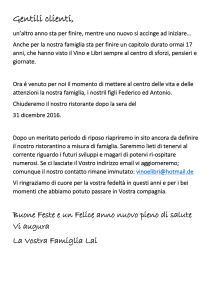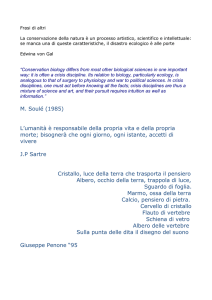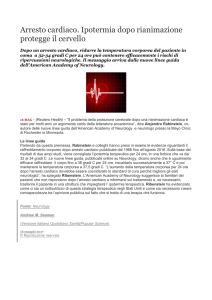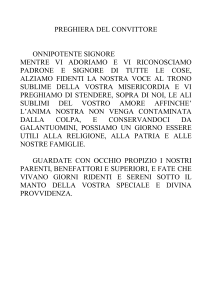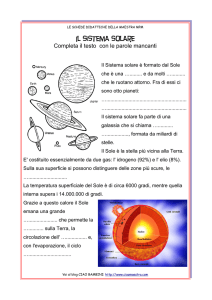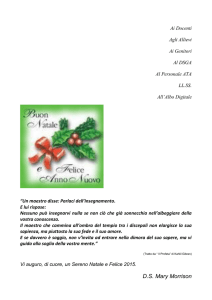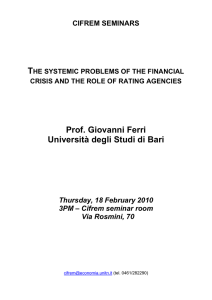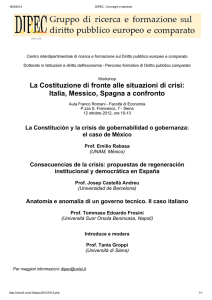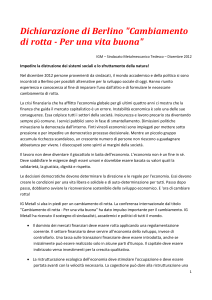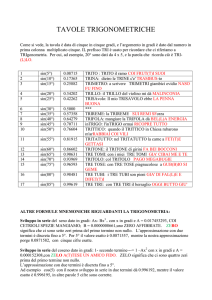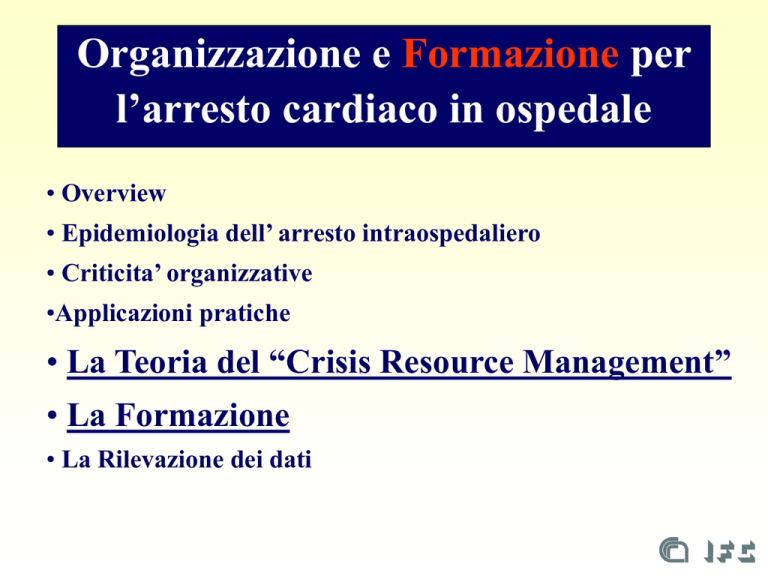
Organizzazione e Formazione per
l’arresto cardiaco in ospedale
• Overview
• Epidemiologia dell’ arresto intraospedaliero
• Criticita’ organizzative
•Applicazioni pratiche
• La Teoria del “Crisis Resource Management”
• La Formazione
• La Rilevazione dei dati
Il concetto di EVIDENZA
“… la consuetudine e l’evidenza”
Questa è la trascrizione di una conversazione realmente avvenuta via radio tra una nave
della Marina degli Stati Uniti e le autorità locali, al largo della costa di Terranova
nell'ottobre del 1995.
Canadesi: Prego, modificate la vostra rotta di 15 gradi Sud per evitare collisioni.
Americani: Prego, modificate la vostra rotta di 15 gradi Nord per evitare collisioni.
Canadesi: Negativo. Voi dovete modificare la vostra rotta di 15 gradi Sud per evitare collisioni.
Americani: QUI PARLA IL COMANDANTE DELLA PORTAEREI USS LINCOLN, LA
SECONDA PIÙ GRANDE NAVE DELLA FLOTTA ATLANTICA DEGLI STATI UNITI.
SIAMO SCORTATI DA TRE CACCIATORPEDINIERE, TRE INCROCIATORI E DA
NUMEROSI VASCELLI DI SUPPORTO. IO RICHIEDO CHE VOI MODIFICHIATE LA
VOSTRA ROTTA DI 15 GRADI NORD, RIPETO, UNO CINQUE GRADI NORD. IN
CASO CONTRARIO VERRANNO MESSE IN ATTO LE OPPORTUNE
CONTROMISURE PER GARANTIRE LA SICUREZZA DI QUESTA NAVE.
Canadesi: Questo è un faro. Vedete voi.
BLSD e ACLS
“… la medicina basata sull’evidenza”
Linee Guida
Nebraska
1970
AHA
1994
!
ILCOR
2000
Training should move away from large-group, lecture
based courses to small-group, scenario-based,
facilitated, interactive teaching.
High-fidelity simulation-directed training should
increasingly supplement instructor-directed training
Crisis resource management and communication should
be a component of training…
In the 1980s, the aviation
industry developed training in:
“Crew Resource Management”
Gaba DM, et al. New York: Churchill
Livingstone, 1994.
“Crisis Management in
Anesthesiology”
Although medical students most often know the
theory of what needs to be done in an emergency
situation, they are surprised and stressed by how
difficult is to actually do it.
Clinicians (doctors and nurses) need training to
practise and improve the actual work skills and
behaviours required to perform tasks and functions
on the job.
In Collaborazione con:
Assessorato per il diritto alla salute
Regione Toscana
Azienda Ospedaliero Universitaria Pisana
U.O.Chirurgia Generale e Trapianti
Direttore: Prof. Franco Mosca
S.V.D. An. T. I. chirurgia generale, vascolare e trapianti
Direttore: Dott.ssa Maria Grana
Istituto di Fisiologia Clinica- CNR, Pisa
Direttore: Prof. Luigi Donato
Responsabile Formazione: Dott. Danilo Neglia
Centro di Eccellenza MIUR
computer assisted surgery “Endocas”
Con il sostegno della:
Fondazione ARPA
Ed il patrocinio di:
Associazione Nazionale Medici Cardiologi Ospedalieri
American Heart Association
Organizzazione e Formazione per
l’arresto cardiaco in ospedale
• Overview
• Epidemiologia dell’ arresto intraospedaliero
• Criticita’ organizzative
•Applicazioni pratiche
•La Teoria del “Crisis Resource Management”
• La Formazione
• La
Rilevazione dei dati
Risultati - 2
End-point primario:
miglioramento risultati sull’ACR
• poche schede compilate adeguatamente
• ma finalmente abbiamo dati certi sull’ACR
ospedaliero, dati su cui sviluppare un’analisi
approfondita e verificare i miglioramenti
100
90
80
70
60
50
40
30
20
10
0
1999
2000
2001
2002
LA Weekly interview with Jacques
Derrida
"The deconstruction of the
actuality"
What's the difference between knowledge and wisdom?
“… you can know lots of things and have no wisdom at all.”
“Between knowledge and action there is an abyss… I
try to know as much as possible before making a
decision, but I know that at the moment of the decision
I'll make a leap beyond knowledge.”
The CHALLENGE !
PREVENZIONE
INTERVENTO
TEAM “3”
“MEWS”
SISTEMA DI EMERGENZA
“INTEGRATO”
D.N.A.R
ospedaliero
Monitoraggio
“mobile”
Continuità assistenziale
“OUTREACH TEAM “


